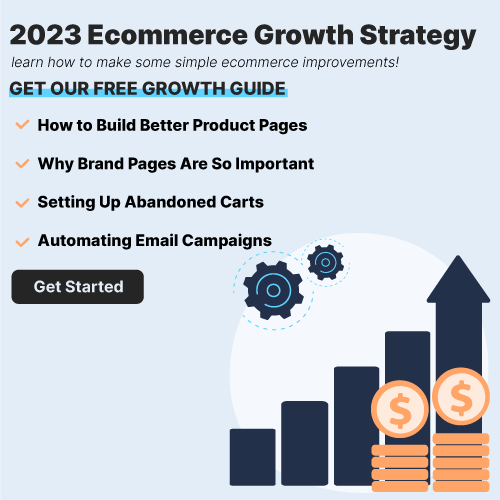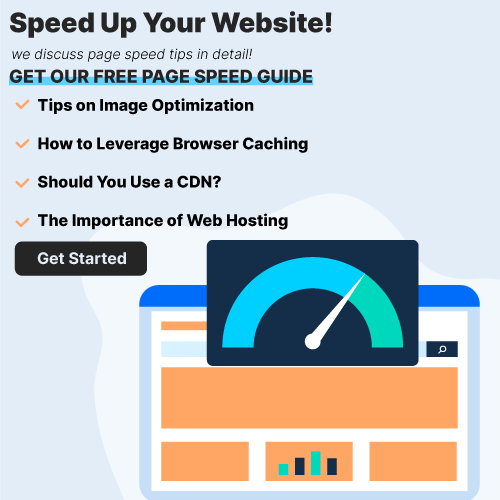Hello, UX enthusiasts! Want to create an exceptional online experience for your visitors and keep them coming back for more? Our guide to the top 38 UX websites is here to help.
Our team of digital marketing experts has carefully evaluated the best UX sites, taking into account factors such as design, functionality, uniqueness, and user experience. From seamless navigation to visually stunning designs, these sites embody excellence in the UX world.
Not only will you find inspiration for your own website, but also valuable tips on how to create an unforgettable user experience that meets the needs of your visitors.
So, get ready to elevate your website’s UX with the help of this guide, and create an online experience that your visitors will rave about! For more examples, head back to our incredible web design examples article!
Top UX Website Designs
1. Happy Ring
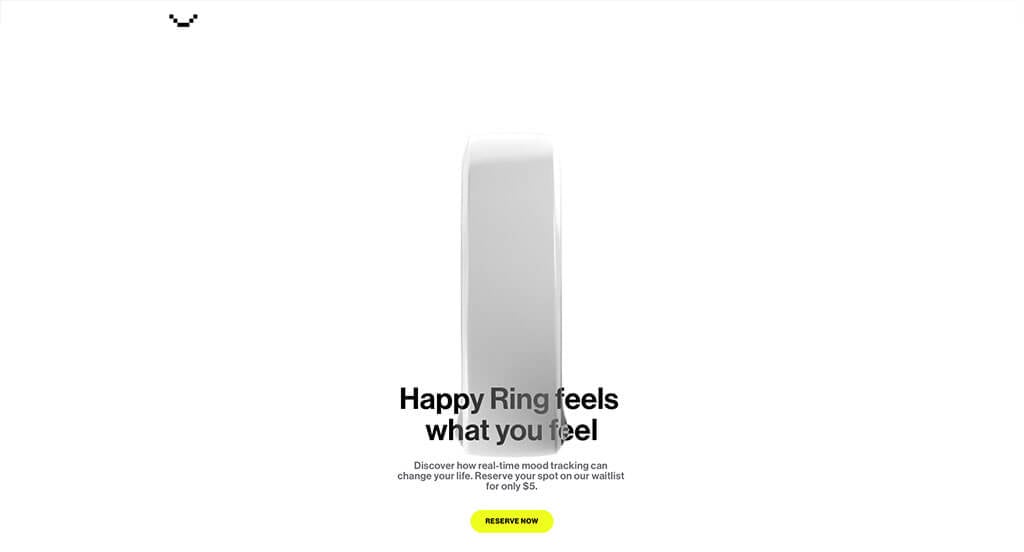
We appreciated how this medical technology site used the colors of black, white and yellowish-green to create an attractive website design. We thought this was a good example of a homepage layout for UX sites because of their smooth transitions. Their captivating font was definitely refreshing for a unique site. They had internet marketing in mind when creating the organized layout for their website. So many attractive qualities to consider when ranking this website.
2. Parallel
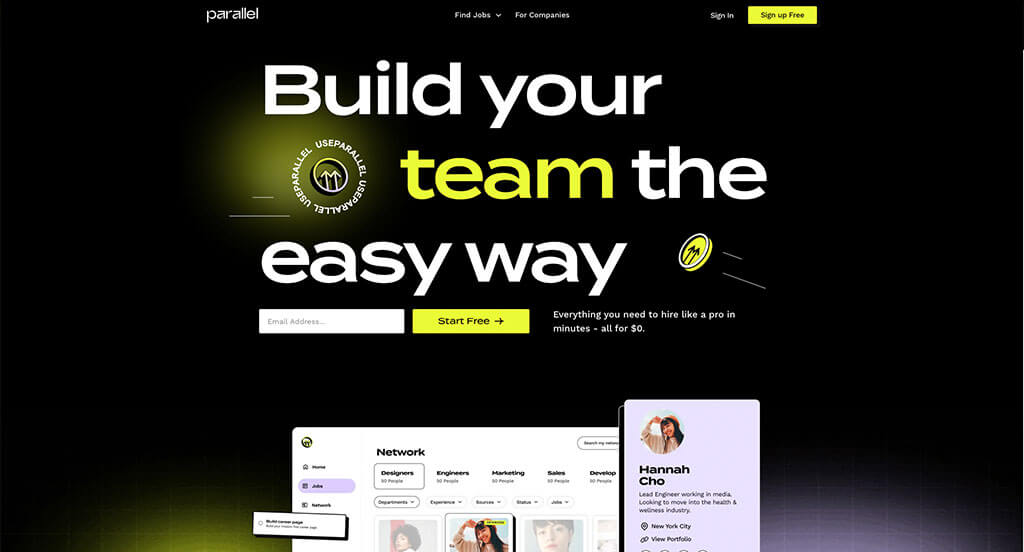
The Parallel website has a very professional feel to it, thanks to its unique use of black, white and lime green. As you scroll through the homepage of the website, one of the design qualities you will see is the placement of their imagery. The different sized text was a good choice for a unique UX website. Parallel clearly had a focus on ease of use when creating the customer review section for their website. Give some thought to the unique design of this website when developing your next website.
3. Oak & Eden
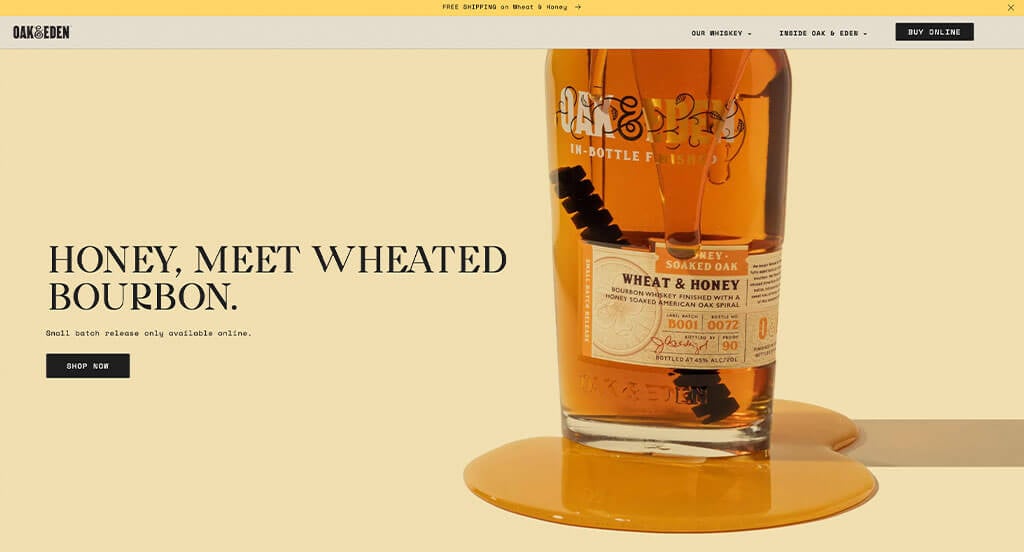
This is a great website design example for a UX website looking to get inspired for their next custom layout. One of the homepage features in Oak & Eden we noticed was their high-quality visuals because it was rather refreshing for a UX website. Their simple color palette was another design quality in this custom website we enjoyed. Oak & Eden clearly had a focus on digital marketing when creating the domain for their website that matches the company’s name. If you are looking for template options for your next UX site, give some thought to this one.
4. QuickBooks
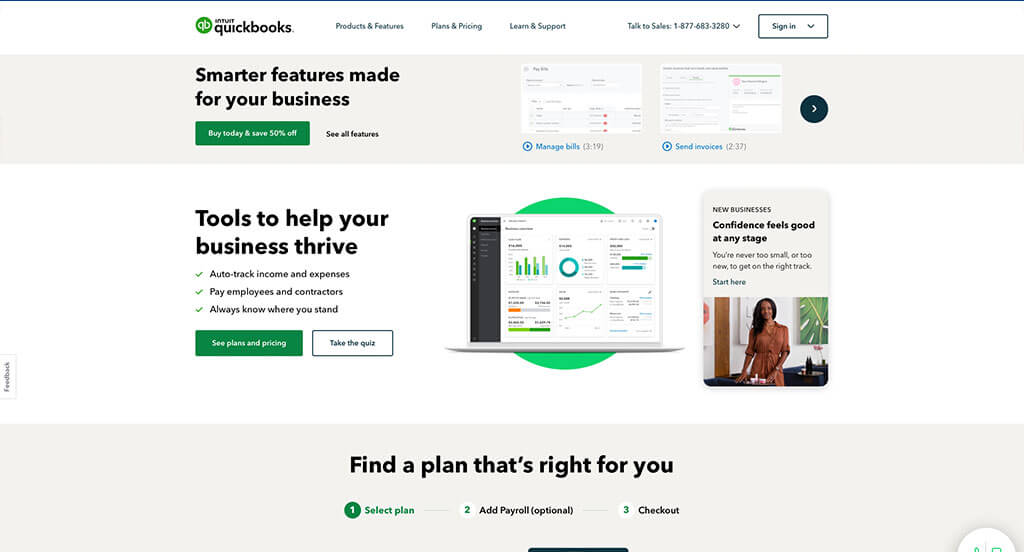
We appreciated how this UX website used the colors of blue, green and white to create a custom web design layout. The clearly labeled pricing of their plans that show you what is included was definitely the most impactful quality in the homepage of QuickBooks. The large buttons to enhance usability was another reason why we included this website in our list of the best layouts for UX Sites. QuickBooks had conversions in mind when building the navigation bar with individual categories for their website. Be sure to consider the great design of this bookkeeping website when developing your next custom website.
5. Reserve America
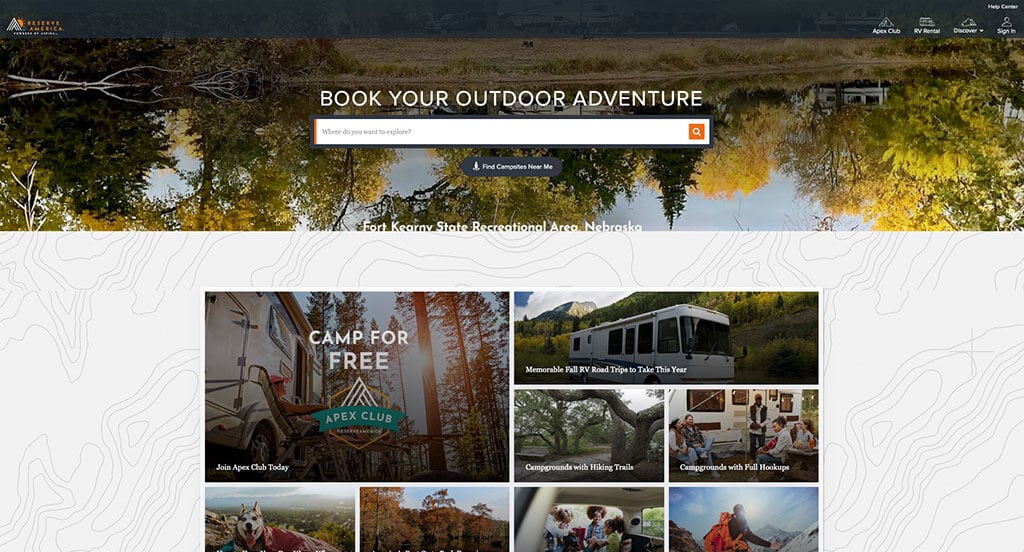
Reserve America has a great UX website that uses gray, white, blue and orange for a color scheme. The creative logo design was definitely the most impactful feature in the homepage of Reserve America. Another feature of this creative UX site we enjoyed was their thoughtful background patterns. Reserve America clearly had a focus on internet marketing when creating the blog for their website. With so many good reasons to consider this UX website, it’s no wonder we included it in this list of the best websites!
6. Ikon Pass
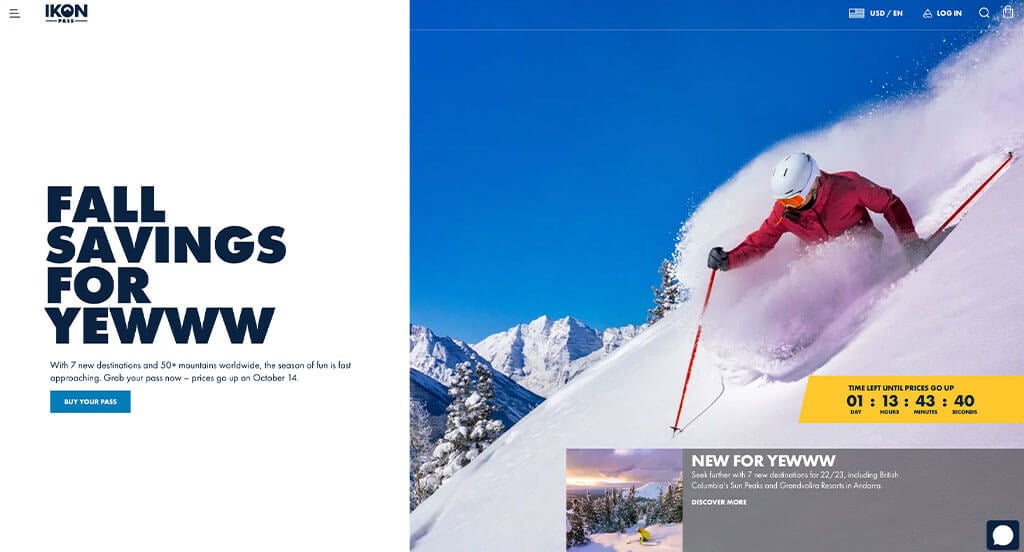
This is a great website design example for UX websites to see when looking for inspiration on a custom look and feel for their site. One of the homepage features in Ikon Pass we noticed was their subtle animations which was a great choice for a UX website. The staggered layout for information was refreshing for a professional site. They clearly had a focus on website accessibility when designing the simple navigation for their website. What a great website to review when building out your next UX website!
7. Mural
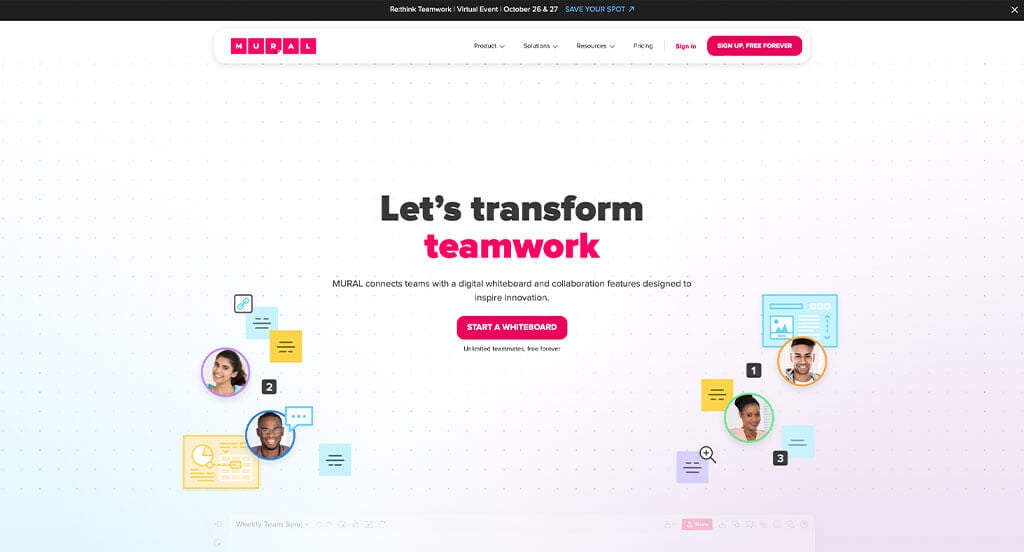
This is a good example of a website design for UX sites to check out when looking for a professional look and feel for their website. The most refreshing part of this website was the variation of bright colors used in their pages. The organized flow of information was a good choice for a professional UX site. Mural clearly had a focus on website marketing when designing the small graphics for their website. Don’t forget to check this website out while looking through our list of the best UX website layouts!
8. Ikea
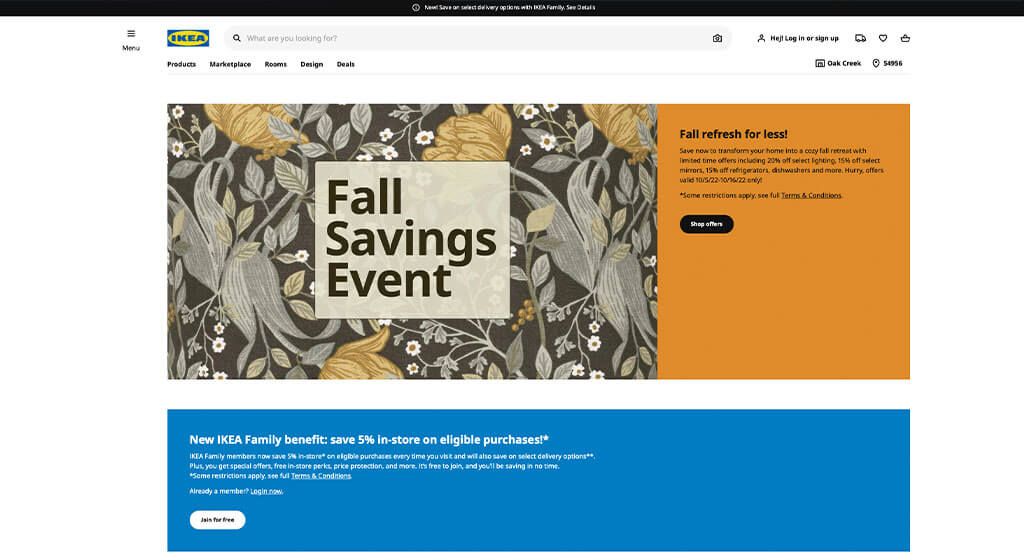
This is a good example of a website design for people to look at when searching for a professional look and feel for a new site. After scrolling past the navigation of this UX website, you’ll immediately notice their memorable logo design. Another thoughtful feature in this creative website was the clearly labeled menu. They clearly had a focus on website marketing when building the domain for their website that matches their company name. For UX sites looking for examples for their next website layout, this example will for sure be one to consider.
9. Scheels
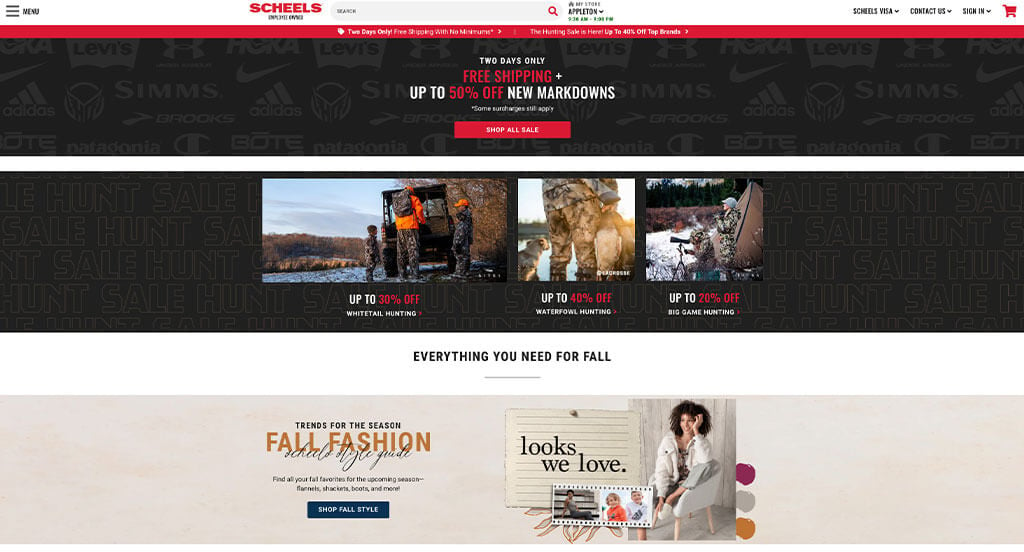
The website of Scheels ranked because it’s one of the nicer UX websites we have encountered. One of the parts in this website’s homepage that caught our attention was definitely the bright red accent color. The logical structure to the content was another feature in this professional UX site we enjoyed. They had website marketing in mind when creating the simple checkout process for their website. Give some thought to the creative design of this UX website when building out your next website.
10. Target

This is a good example of a UX website design for a person looking for a professional look and feel. While most websites share this quality, we thought Target did a nice job of with their well planned imagery. The memorable logo design was a nice touch for a professional website. Target had conversions in mind when designing the variety of colors to display different categories within their website. What a great website to review when designing your next website!
11. Marco
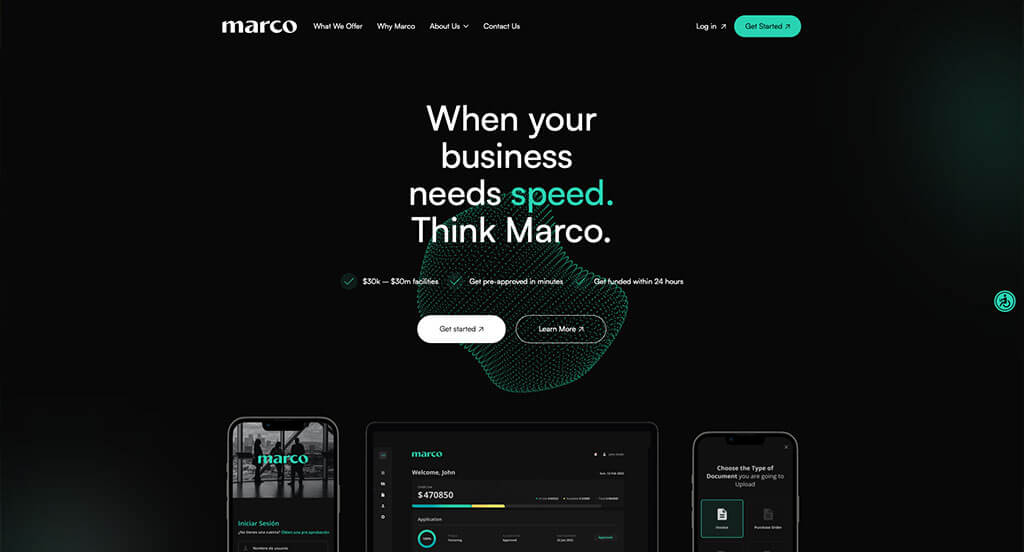
Our web designers noticed the green and black color scheme seen in the Marco website, which we liked because it creates a stunning template. As you scroll through the homepage, one of the design qualities you’ll notice is their subtle animations. Another design quality we liked in this professional website was their optimized content. Marco clearly had ease of use in mind when creating the well-labeled navigation bar for their website. These were just a few of the numerous great qualities in this website to consider when we were putting together the list of top templates for UX sites.
12. Meijer
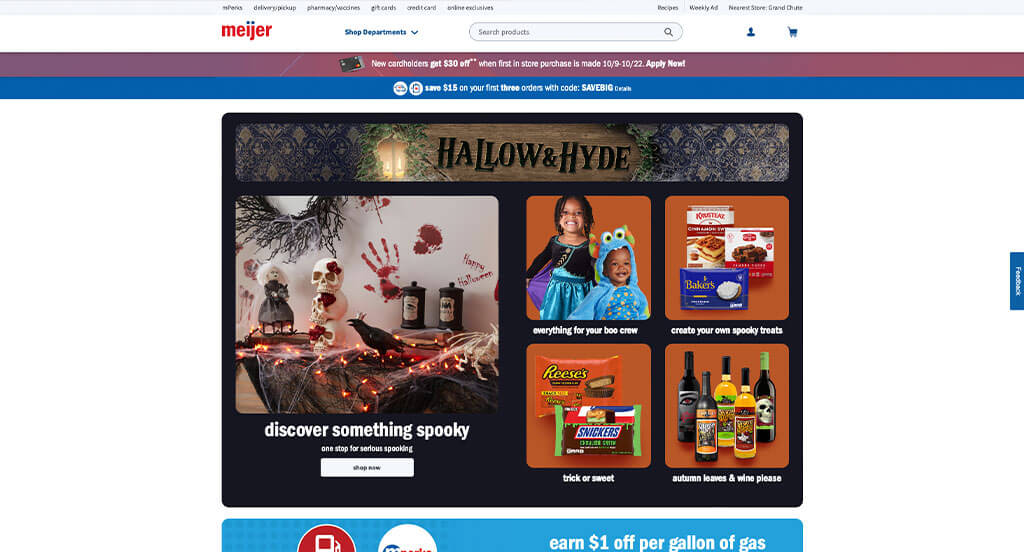
This is a good example of a UX website design to give inspiration when looking for a professional website layout idea. The ability to browse the site by department was definitely the most impactful feature of the homepage of this website. Another thoughtful feature in this custom online shop site was the balance of white space. From a marketing point of view, we really liked the way this website utilized a search bar to enhance usability. Be sure to consider the one-of-a-kind design of this UX website when developing your next custom website.
13. Ralph Lauren
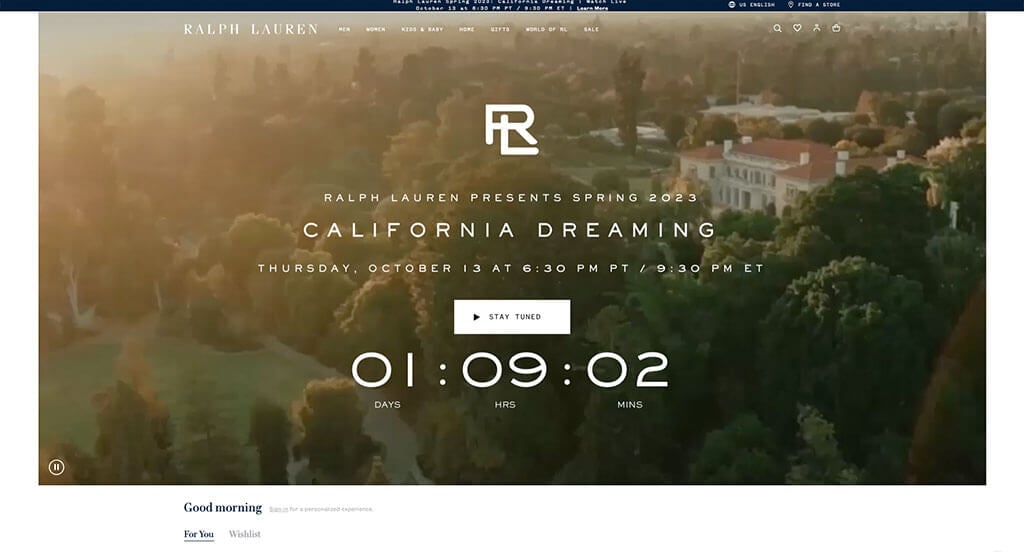
The blue, white and black color palette seen in this custom UX site stood out to us because it creates a design that still allows images to be the main focus of the page. The the creative animation showing you can customize your shirts was probably the most impactful feature in the homepage of Ralph Lauren. Another design quality in this professional UX website we liked was their high-quality visuals. The domain that matches the company’s name helped make this one of the best UX websites we reviewed. There was no shortage of reasons to include this website in our list of best UX sites to consider when building out your next website.
14. Apple

Showcasing a clean and intuitive layout, this website keeps things simple for a UX site. After scrolling past the navigation of this website, you’ll immediately notice the imagery showcasing features of their products. Another thoughtful feature in this clean technology website we enjoyed was their clearly labeled menu. They clearly had conversions in mind when creating the simple and professional font for their website. With so many good reasons to consider this UX website, it’s no wonder we included it in this list of the best websites!
15. Weltio
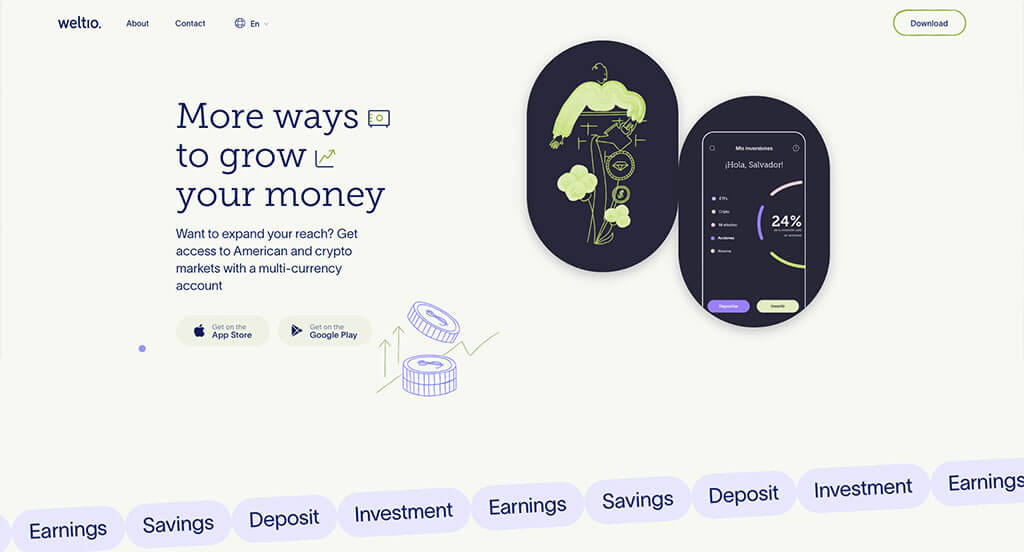
This is a creative website design example for UX sites looking to build their next custom website. As you scroll through the homepage of this website, one of the design qualities you’ll see is their smooth transitions. The light purple accent was refreshing for a professional site. They clearly had digital marketing in mind when designing the fun graphics for their website. Give some thought to the unique design of this UX website when building your next website.
16. Busch

This is a good example of a website design for anyone to see when looking for a professional website design. Our web designers thought this website was a good example for UX sites because of their color scheme for their site that matches their logo. Their high-quality images were another unique quality in this professional UX site we enjoyed. Busch clearly had a focus on ease of use when designing the well-labeled navigation bar for their website. What a great UX website to review when designing your next website!
17. Marcus Medical
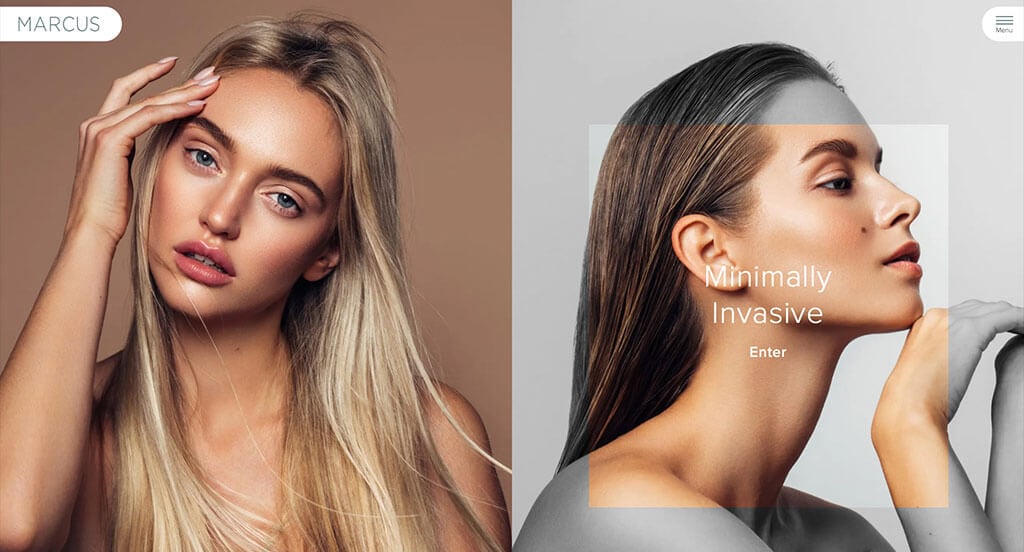
This is a great web design example for UX sites looking for a professional website. The relaxing color palette was likely the most impactful feature in the homepage of Marcus Medical. The customer review section was another design quality seen in this custom UX website we enjoyed. They clearly had a focus on customer use when creating other helpful information such as their blog, financing help and frequently asked questions for their website. Talk about a great website to have included in this list!
18. BruMate
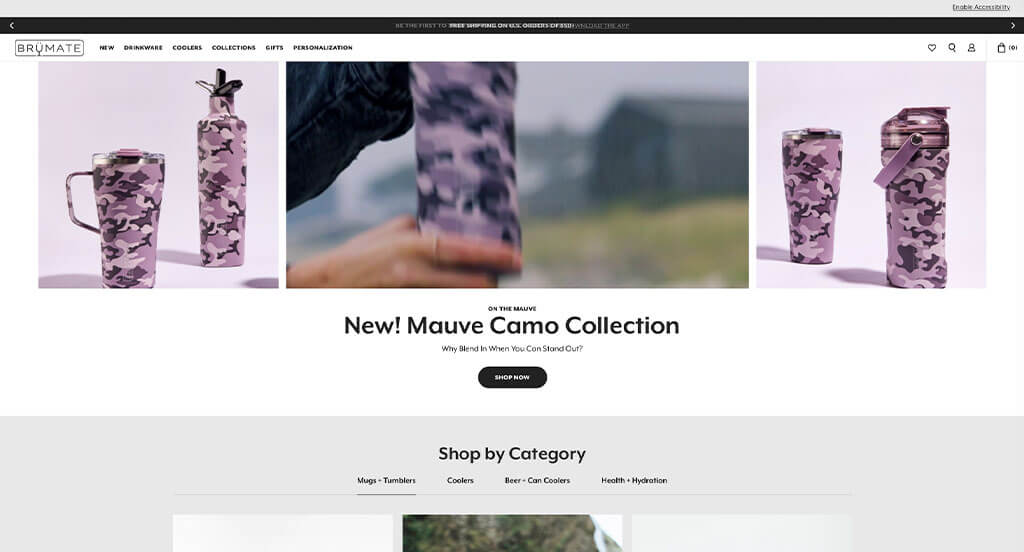
Sporting a clean and intuitive layout, this website keeps things simple for a drinkware site. The well planned images were likely the most impactful quality in the homepage of this website. The domain for their website that matches their company name was another unique quality in this professional UX site we enjoyed. They had internet marketing in mind when designing the incorporation of social media for their website. You won’t be disappointed after reviewing this website for design ideas for your next website!
19. Credit Karma
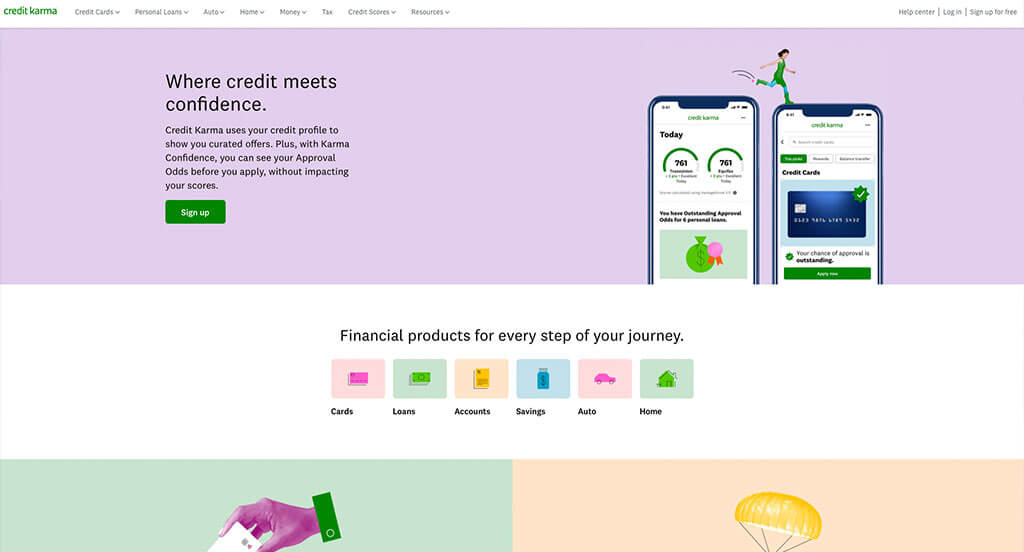
We appreciated how this UX website used a pastel color scheme to create a custom web design. After scrolling past the navigation of this website, you’ll notice their simple graphics. The staggered layout was a nice touch for a custom website. They clearly had a focus on ease of use when building the domain for their website that matches their company name. Give some thought to the great design of this UX website when building out your next website.
20. Altoids
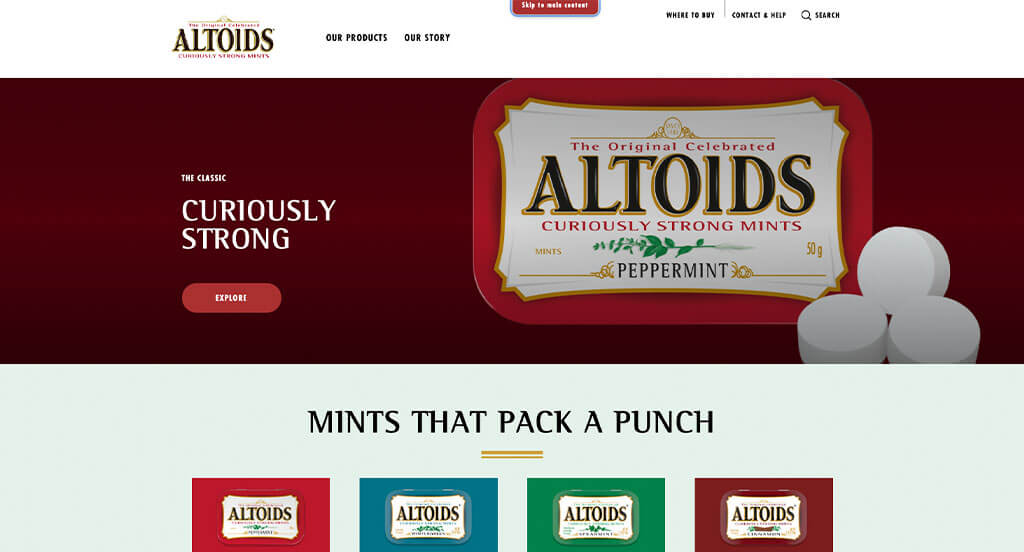
This is a good example to look at when looking for inspiration on a professional looking website. The integration of social media was definitely the most impactful feature in the homepage of Altoids. The simplistic template was definitely refreshing for a professional breath mint site. They had ease of use in mind when designing the memorable logo design for their website. Don’t scroll past this website when considering design ideas for your next UX website!
21. Idle
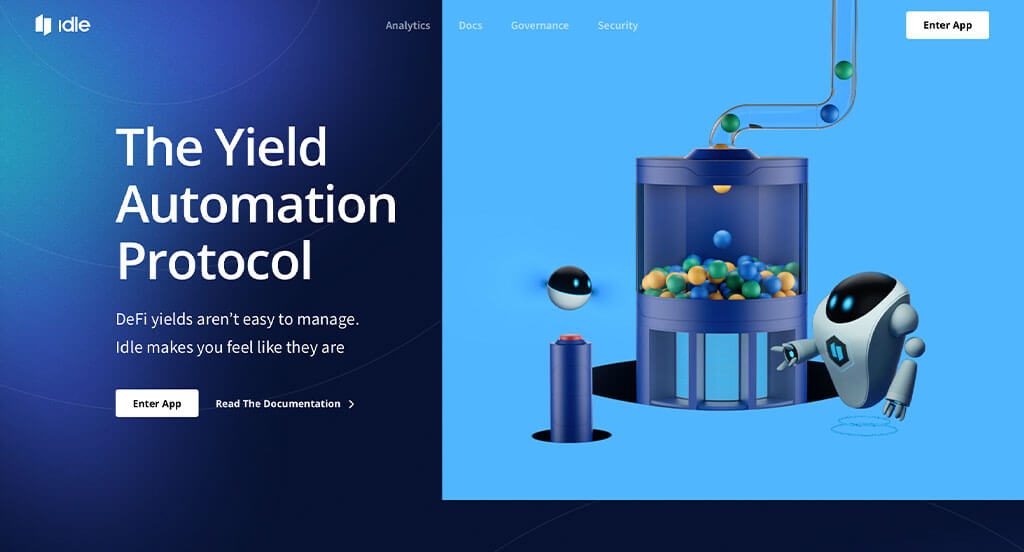
The blue and white color scheme of this UX website stood out to us because it looked unique. One of the homepage features of Idle we noticed was their animated graphics because it was rather refreshing for a UX website. This clean site also does a good job with the subtle circle graphics for the background. Idle had ease of use in mind when designing the domain for their website that matches their company name. Be sure to consider the creative design of this UX website when building your next website.
22. Starbucks
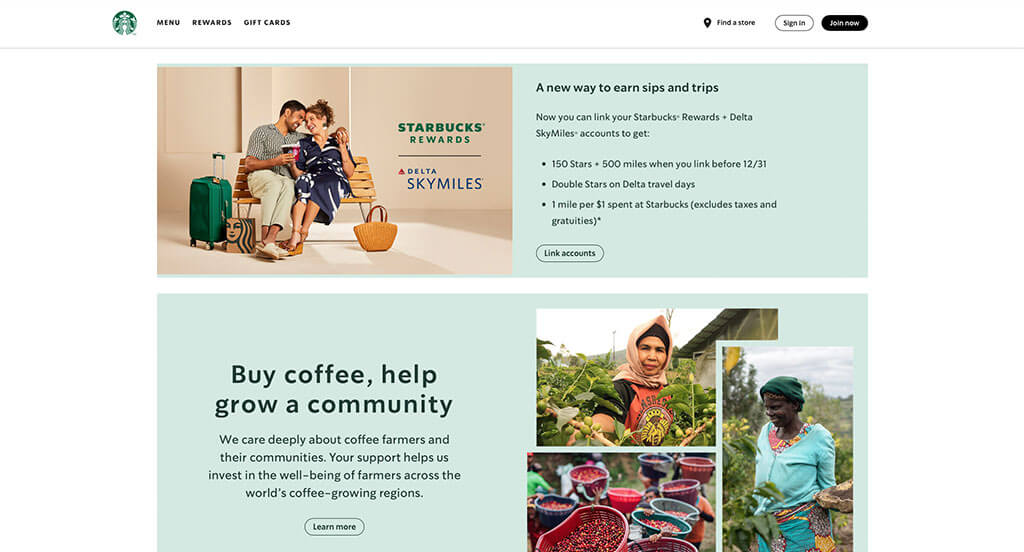
Our team liked the green and white color scheme of the Starbucks website, because it matches their logo. We thought this was a good homepage design example for UX sites because of their staggered layout. The memorable logo design was refreshing for a unique website. Starbucks clearly had website marketing in mind when designing the buttons to enhance usability within their website. With so many good reasons to consider this UX website, it’s no wonder we included it in this list of the best websites!
23. Pick ‘n Save
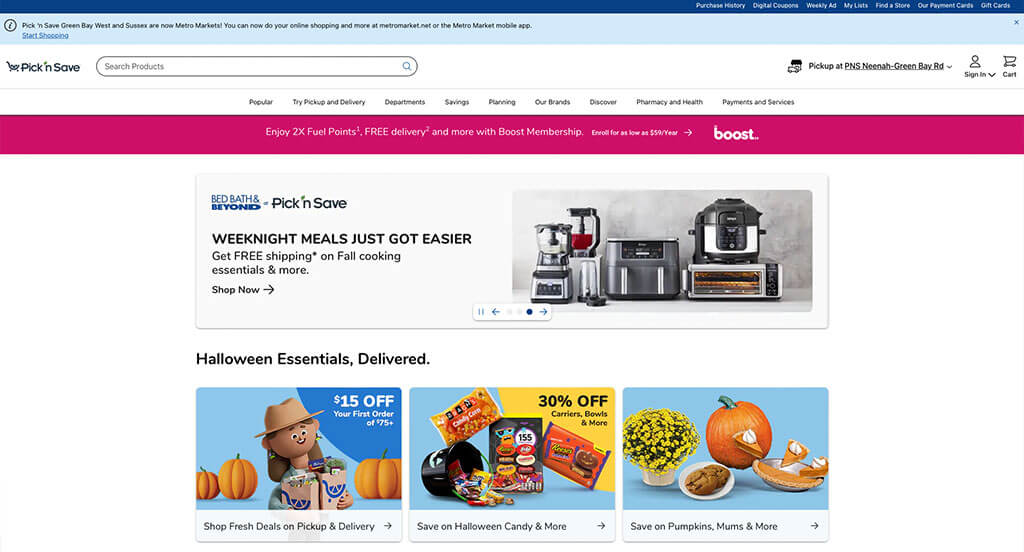
This is a great website design example for UX sites to see while looking for a custom layout. As you scroll through the homepage, one of the qualities you’ll notice right away is their images to separate categories within their page. Another thoughtful quality in this clean UX website was the professional text. Pick ‘n Save clearly had website accessibility in mind when creating the domain for their website that matches their company name. So many attractive qualities to consider when reviewing this website.
24. Shopify

This is a creative website design example for UX sites to check out while looking to build their next professional website. Of all the UX sites websites we reviewed, one of the features in this custom website we liked was their subtle animations. Their thoughtful logo was refreshing for a professional site. Shopify had conversations in mind when creating the balance of white space of their website. So many attractive qualities to consider when ranking this website.
25. Rover
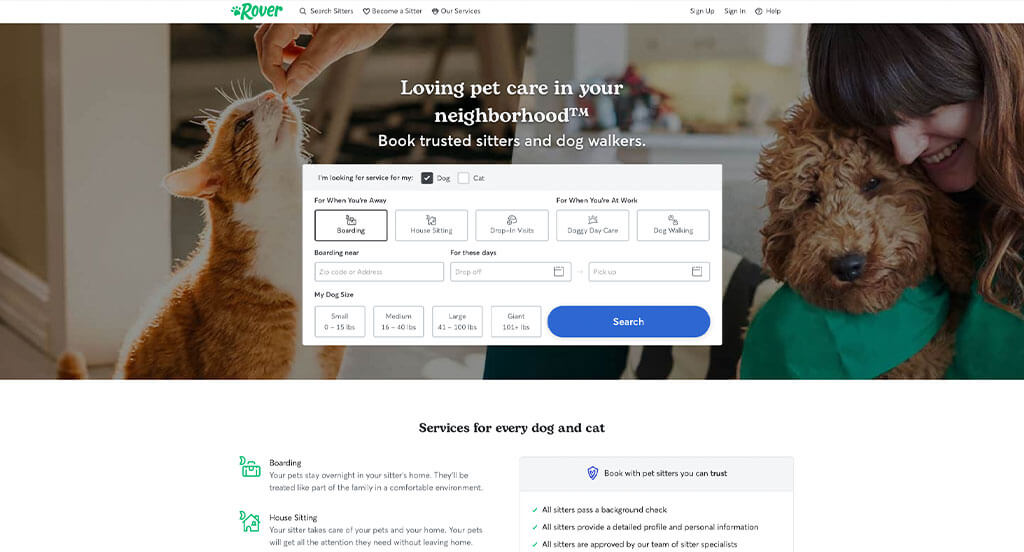
There were a lot of UX sites to choose from, but the website of Rover was a great example of a nicely organized website with a black, green, blue and white color scheme. The layout of this UX website was thoughtful because of their pet survey to give you the best service options. The ability to read about the person you are hiring is one of the reasons we included this animal care site in our rankings for the top web design ideas for UX sites. Rover clearly had a focus on website marketing when insuring simple use within their website. Give some thought to the creative design of this UX website when developing your next website.
26. Simplehuman
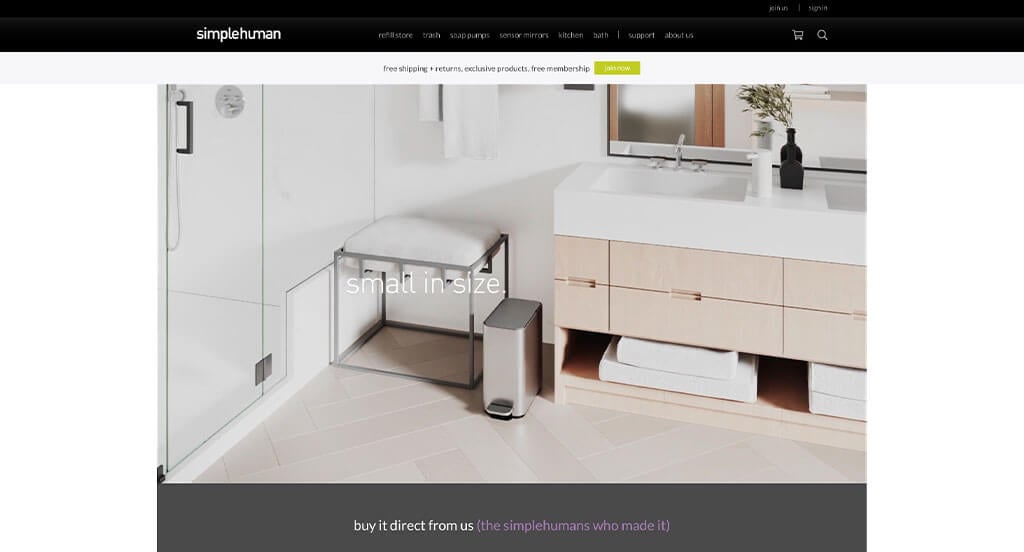
We liked how this UX website combined black, white and a mix of other colors for accents into a custom web design. The most attention grabbing aspect of this UX website was definitely their large visuals. The clearly labeled menu in this website helped make it into our list of the best websites for UX sites. Simplehuman had internet marketing in mind when creating the blog for their website. If you are looking for template examples for your next UX website, be sure to check this one out.
27. Yelp
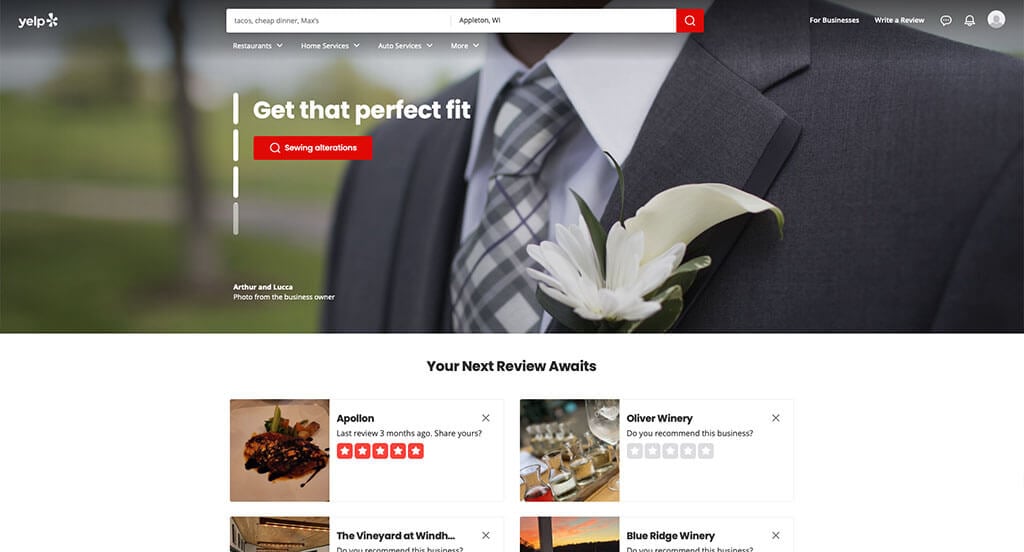
This is a good example of a website design for UX sites looking for a professional look and feel for their next website. Our web designers thought this website was a good design idea for UX sites because of the ability to look at reviews by business type. Another feature in this professional site was the search bar. They had ease of use in mind when building the domain for their website that matches their company name. For UX sites looking for ideas on their next website, this example will definitely be one to keep in mind.
28. Symbol Audio
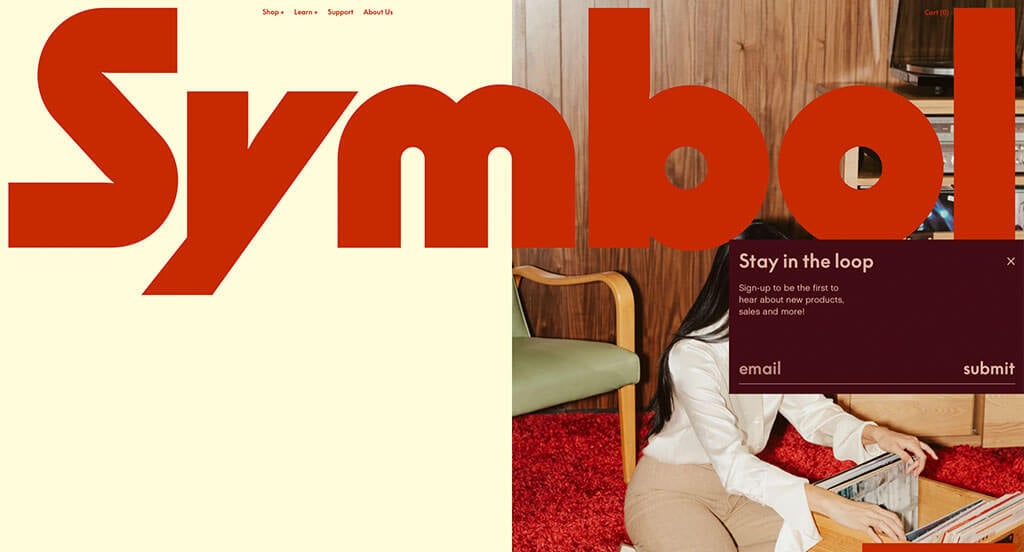
This is a great website design idea for anyone looking for custom website layouts. One of the design features we liked most on the homepage of Symbol Audio was their captivating font choice because it was rather refreshing for a UX website. Their balance of white space was another reason why we included this website in our rankings for the top web design ideas for UX sites. From a marketing point of view, we liked the way they utilized a unique color combination. Any website designer making websites for UX sites will want to consider checking this website out.
29. The Wood Veneer Hub
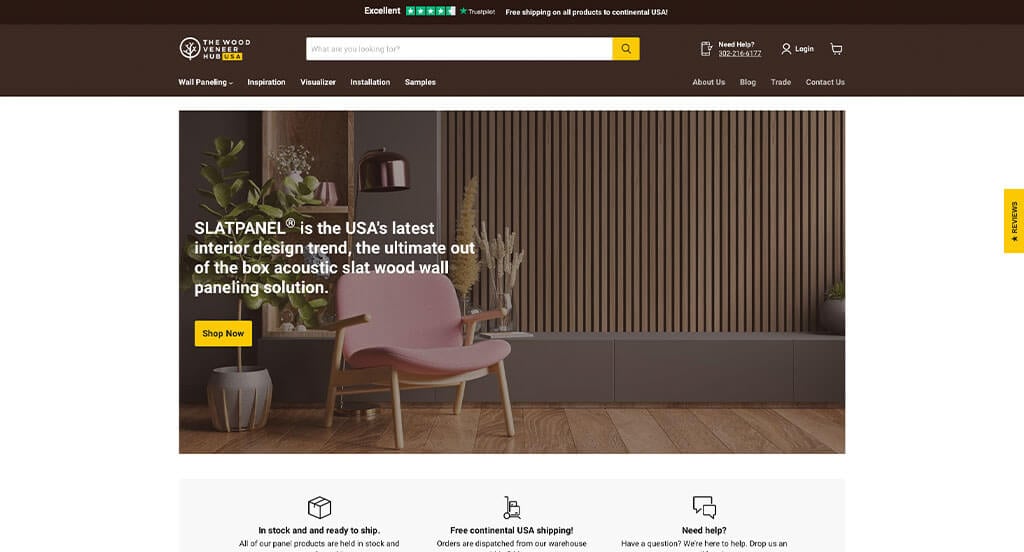
Our team liked the white, brown and yellow color scheme seen in the The Wood Veneer Hub website, which we liked because it creates a beautiful harmony with their imagery. Our web designers thought this was a good homepage design example for UX sites because of their colorful buttons to ensure simple navigation. The high-quality visuals were a unique choice for a custom website. The Wood Veneer Hub clearly had a focus on digital marketing when designing the simple checkout process for their website. Don’t skip past this website when hunting for design ideas for your next UX website!
30. Cuckoo
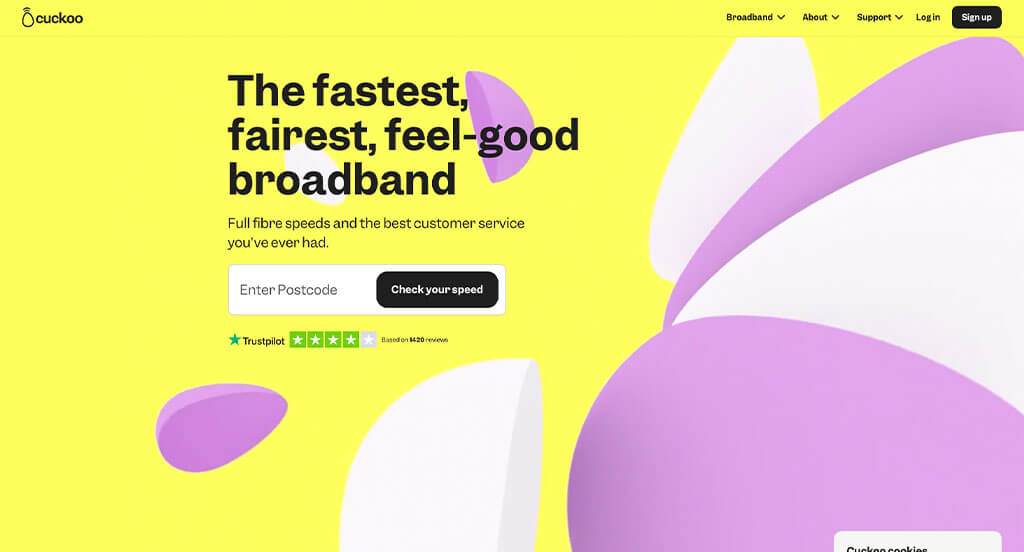
This is a creative website design example for UX sites looking to build their next website. After scrolling past the navigation of this UX website, you’ll notice their bright yellow, pink and white color palette. Another feature in this clean Wi-Fi & more site was their display of reviews for their company. They had website marketing in mind when designing the animations for their website. What a great website to review when building out your next UX website!
31. Mint Mobile
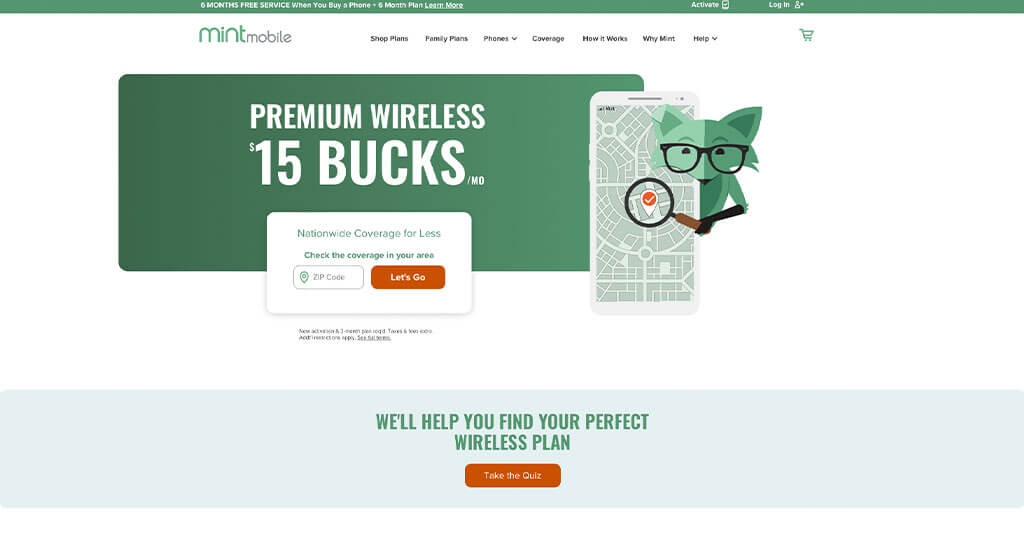
This is a great website design example for anyone looking for inspiration on a custom look and feel. As you scroll through the homepage, one of the qualities you’ll notice right away is the mint green, orange and white color scheme. The clearly labeled pricing was another unique quality in this professional UX website we enjoyed. They clearly had a focus on digital marketing when creating the adorable fox mascot graphic for their website. With so many great reasons to consider this UX website, it’s no wonder we included it in this list of the best websites!
32. Duolingo

The green and white color scheme of this UX website stood out to us because it gives off a feeling of growth or in this case learning. Our web designers thought this website was a good design idea for UX sites because of the creative font. The animal and people graphics that are seen throughout their site was definitely refreshing for a custom learning site. They clearly had a focus on website usability when creating the domain for their website that matches the company’s name. If you are looking for template examples for your next UX site, be sure to check this one out.
33. Sdx
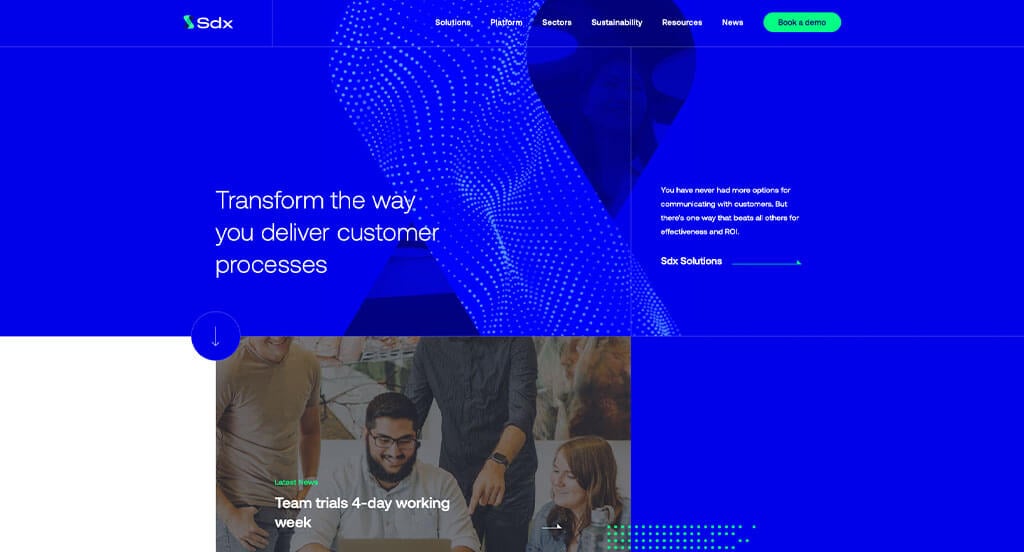
This is a great example for UX sites to check out while looking for a professional look and feel for their next website. The bright blue and green colors was definitely the most impactful feature in the homepage of this website. The geometric patterns seen throughout the pages was a unique choice for a professional website. They clearly had website marketing in mind when creating the clearly labeled menu for their website. Give some thought to the creative design of this UX website when building out your next website.
34. Trippin
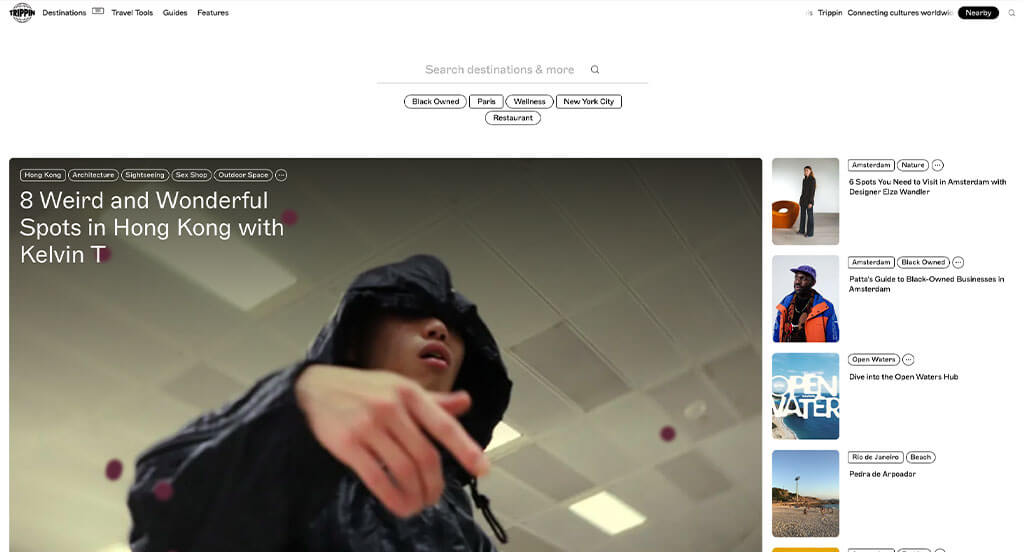
This is a great website design example for UX sites looking for a custom layout. After scrolling past the header of this UX site, you’ll notice their different sections within their travel blog. The thought provoking logo design was definitely refreshing for a custom website. Trippin had conversions in mind when building the different sized fonts for their website. With so many good reasons to consider this UX website, it’s no wonder we included it in this list of the best websites!
35. The Adventure Group

The green, yellow, orange and white colors seen in this adventure site stood out to us because it seems authentic for this site. We thought this was a good example of a homepage layout for UX sites because of the thoughtful logo design. The mountain shaped color blocks was another design quality in this custom travel website we enjoyed. They had conversions in mind when creating the outdoor related graphics for the background of their website. Be sure to consider the one-of-a-kind design of this UX website when developing your next custom website.
36. Nash
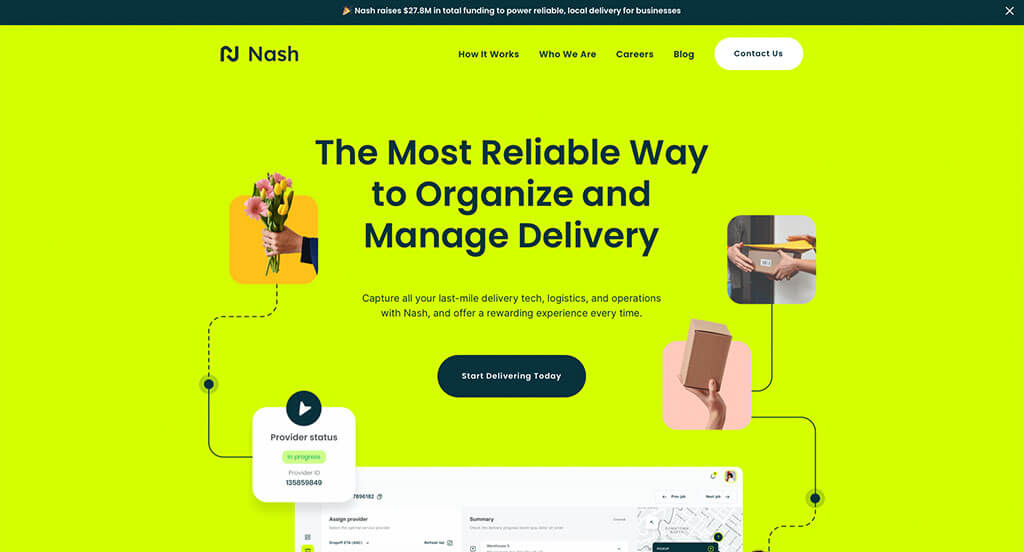
This is a good design example for UX websites to look at when looking for inspiration for their professional website. One of the design features we liked most in the homepage of Nash was the bright color scheme that catches customers eyes because that isn’t something you find on most UX websites. Another design quality of this professional website was their thoughtful logo design. They clearly had conversions in mind when building the well-labeled navigation bar for their website. Any website designer building websites for UX sites will want to consider checking this website out.
37. Fallen Grape

This is a great website design example for UX sites to review when looking for a custom layout. Of all the custom UX sites websites we reviewed, one of the features in this custom website we liked was their simplistic and calming graphics. This custom site also does a good job with the ability to order a larger quantity to save money. The domain for their website that matches their company name helped make this one of the best UX websites we considered. Talk about a great website to have included in this list!
38. Tim Hortons
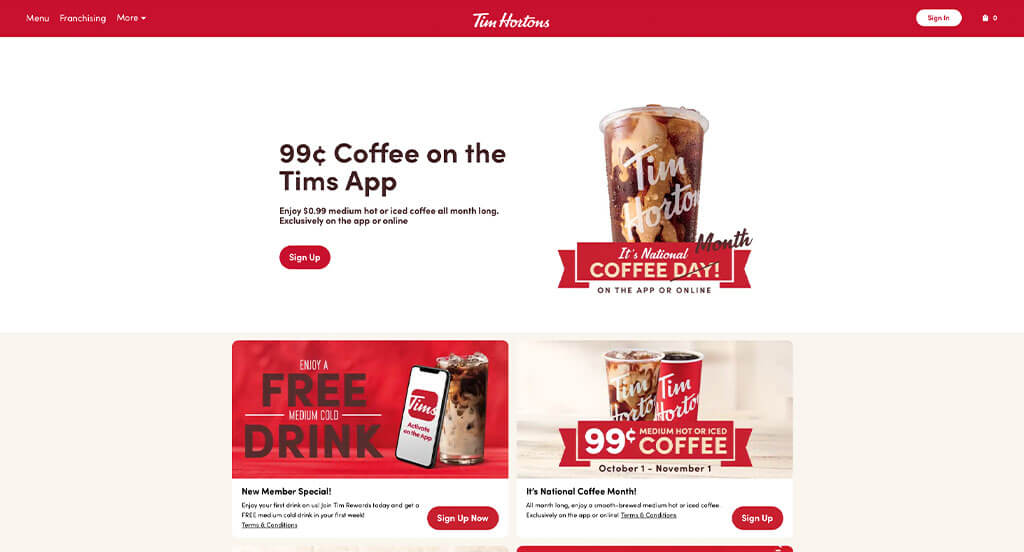
There were a lot of UX sites to choose from, but the website of Tim Hortons was a great example of a nicely organized website with a red, brown and white color scheme. The pleasing imagery was probably the most impactful feature in the homepage of this website. Another feature in this clean UX website was the large buttons to enhance usability. Tim Hortons clearly had a focus on digital marketing when designing the simple checkout process for their website. For the UX sites out there searching for website examples, make sure to check this one out!
What is User Experience?
User Experience (UX) is a term first coined by Don Norman, back in the early 1990s while he was working at Apple as a cognitive psychologist. Fundamentally, user experience is a blend of design, engineering, psychology, and customer service. User experience design involves several methods and techniques which analyze how the user interacts with a website, device, or product, and how they feel while using it. It also incorporates understanding the user’s motivations and determining whether the design helps the user achieve their goals.
UX incorporates elements of:
- Conducting user research
- Analyzing user testing
- Understanding user needs
- Improving content and interaction design
According to Peter Morville’s User Experience Honeycomb, available on usability.gov, there are seven aspects of user experience that you will need to consider. Hire a web development company that has a good understanding of the following factors:
- Usefulness – the website content should meet the user’ needs
- Usability – the website should be easy to use and allow the user to achieve their end objective
- Desirability – the design should be appealing throughout the branding, image, identity, and aesthetics of the website
- Findability – the content, pages, and navigation menus should be easy to locate and navigate
- Accessibility – the website should be accessible to users with disabilities
- Credibility – the website should provide a truthful, reliable experience; users should be able to trust your brand
- Valuable – the website should deliver value to the business and the customer alike
3 Things a UX Design Company Can Do for Your Website
If you’re a business owner that is looking to improve the user experience of your website, then it might be time for you to make a call to an experienced UX design company. There are many things that these companies can do for your site during a redesign. These include improving navigation and flow, so that visitors don’t get lost on the page.
1.) Conduct usability tests & provide feedback
UX companies evaluate ways the interface could be improved based on user testing sessions. The goal is always to create something that benefits both the business and the consumers who visits the website.
As such, the company will test your website with different people to help you identify any problems. They’ll then come up with solutions and suggest other ways the interface might be improved based on what they discover from the user testing sessions.
The company usually conducts these tests by bringing potential customers into their office space. They then give them a laptop, and having them spend time interacting with your website – all without telling them that it’s for an evaluation of some sort.
Once users have spent anywhere from 30 minutes to a few hours using the site, the UX web designer offers feedback about how well designed or not this particular portion is (e.g., “This form doesn’t seem very accessible”), as well as suggestions for improvement.
The company may also use surveys to test your site. For example, asking someone who’s just landed on your homepage to then locate the about page. If it turns out that it takes a long time for them to do so, then you’ll need to do some experimenting until you find an answer!

2.) Create design and layout wireframes
In addition to user testing, UX designers can also create wireframes that show how different parts of a website would be laid out on screen.
This is particularly useful for websites with lots of sections and pages. By determining what goes where before actively working on the website, it’s possible to save time down the road when these decisions need to be revisited.
Wireframes are typically sketched in grayscale or black-and-white, so they’re easier for everyone to understand. These wireframes usually give a visual representation of what each element will look like and why it was placed there, instead of just text descriptions about each element.
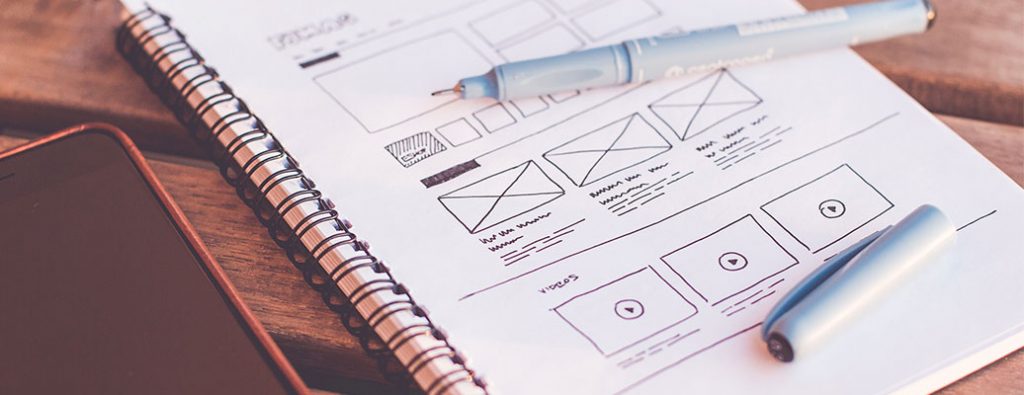
3.) Improve navigation & page flow
A UX design company can improve the navigation of a website by applying guiding principles that make it easier for people to find what they are looking for.
The ultimate goal is to remove the decision-making process. This means having fewer options in front of them at once. By creating a better, less cluttered layout, these tweaks will make it easier for people to navigate through your content and avoid getting frustrated.
This also means visitors will take action quicker and more frequently, whether that’s getting to the checkout page or contacting you for a consultation. Failure to improve your UX will result in more abandoned carts and a loss of customers.
If your company is looking into building a website, check out these 15 tips for commercial web design that we put together for you to get up and running in no time!
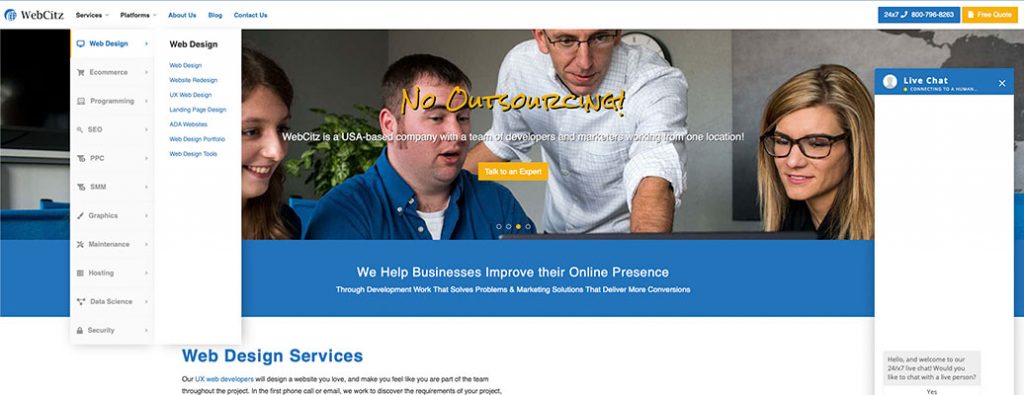
How to Find a UX Design Company that Fits Your Business?
There are many things to consider when choosing a UX design company.
For starters, make sure that they have experience working with your type of business and industry. You also want the company to provide references that give more details about how they have helped similar businesses to your own.
You should ask whether there is an hourly fee or project-based pricing structure for the services offered by this company. Both models may be good options depending on what you need from them at the time (think about how often your website needs changes).
Consider if it’s worth spending more initially for someone who will save you money and time down the road because of their expertise: The right person may well be worth a higher up-front cost. In addition, you should always be prepared to negotiate prices. You may find out some providers are willing to offer you their services at a discounted price just because they like what you’re doing and want to contribute in any way possible.

Questions to Ask the UX Design Company
Asking questions is an essential part of every business deal. Here are some questions you may want to ask:
- What is your availability like?
- Can you work with our budget?
- How much experience do you have in this field?
- What is your web design process?
- Is there a project that you’re proud of?
- Do you offer monthly retainer pricing plans?
- Is there anything you need from us before you start?
- What kind of results can we expect from your service?
- How long do web projects usually take? How often do we need to update our website?
- Do you have any testimonials?
- Who are some of your satisfied clients?
You’ll get the most out of a provider if you know what they specialize in and are able to communicate your needs. Once you’ve found a company that can provide those services, make sure that communication is open throughout the entire project. Following up with providers when there have been delays is also best practice for establishing trust with them.
